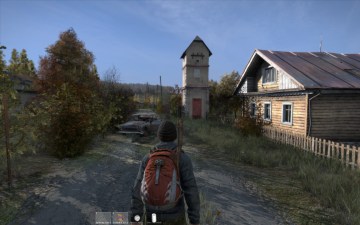Thank you for reading the DayZ and Rust Early Reviews! These reviews are in alpha, and will be so for some time. This means you may experience half-baked opinions, problematic buying advice and many more things that will disrupt your reading experience. We will be working with readers to fix these, so to help us please visit the comments section.
Above all, please remember these reviews are not finished, and are works in progress.
If you’re already playing DayZ, the above disclaimer should look familiar. It’s fashioned after the one that pops up every time you start the game, requiring you to click “I Understand” just to continue. The developers at Bohemia Interactive don’t want you to forget that for $30, you’re buying the journey, not the destination. The subtext: Don’t get too upset if you don’t like what you play. It’ll get probably better, eventually.
The sale of “alpha” games is a new concept for PC gaming. Developers–usually smaller, independent ones–sell their unfinished games at lower prices, while promising years of free updates and inviting players to shape the final product. Minecraft, which became a runaway success long before it was finished, is the most well-known example, but a few other noteworthy games have emerged this way, including Terraria, Wasteland 2 and Kerbal Space Program. Since last March, the PC gaming service Steam has promoted these releases through its Early Access section, giving them even greater visibility.
With the recent launches of DayZ and Rust, I finally became an alpha participant, intrigued by both games’ focus on survival. To stay alive, you must find your own food, clothing and shelter, but you also have to deal with other players who might try to kill you. Either game could make for a fascinating case study on human nature.

So far, I’ve had much more fun with Rust, a game that drops you off naked in the wilderness with just a rock, a torch and some bandages. Rust has some Minecraftian elements, in that you can forage around for resources to build clothing, tools, weapons and shelter. You can also hunt animals and throw their carcasses on the fire for nourishment.
But as soon as you come across another Rust player–each server can have a hundred or more–it’s clear that you’re not in Minecraft anymore. The best resources in Rust, things like stone and metal, are scarce, and many players take the easy route of killing and looting innocent victims.
Murder has no consequence in Rust, and there’s no established system for figuring out who’s a criminal. This makes for some tension every time you cross paths with someone new. If you’re lucky, you’ll stumble upon a village of friendly players. But that village might eventually be raided by a group of bandits. If you die, you lose everything, though you can always stash items in supply crates to use in your next life. The trick is to find a safe hiding spot that won’t get ransacked.
Rust is certainly rough around the edges. Grass effects are glitchy, and servers with lots of players are prone to lag spikes. Every animal you kill, whether it’s a pig, deer or wolf, rewards you with “raw chicken breast,” and every player looks exactly the same–a bald, white male. Most strangely, the only way to light a fire is with wood and charcoal, and the only way to get charcoal is from lit or recently lit campfires, which generate more charcoal. The game could also use more diverse weather beyond just warm and cold.

Still, Rust has a solid foundation. The number of interesting interactions I’ve had with other friendly players makes up for the number of times I’ve been inexplicably bludgeoned or shot to death. I’m eager to see the game flourish, and consider my $20 well-spent.
Right now, I don’t feel the same way about DayZ. The standalone game is based on an ARMA II mod that’s been hailed as one of the best zombie games ever made. So maybe my expectations were too high, even for the alpha.
The thing to realize with DayZ is that it’s mind-numbingly boring for long stretches, perhaps by design. My friend Andrew Groen suggested that you must let yourself get into the fantasy of surviving the zombie apocalypse. That includes the dull parts, like walking down a long and dusty road, or rummaging through empty buildings for the odd can of spaghetti. You can spend an hour doing these things, and never see a soul, living or undead. If you really commit to the role-play, maybe these become moments of suspense, or reflection.

But I had a hard time getting over the clunky interface and laggy controls. Items are needlessly difficult to pick up unless you’re standing right over them while aiming in just the right direction, and it’s made harder by the way players lurch forward with every step. Managing inventory can also be a chore if you’re at maximum carrying capacity. You can always take one last item into your hands, but I couldn’t figure out how to swap this item with one in my pocket without putting one of the items on the ground first. DayZ provides little guidance, and it can be hard to tell if you’ve encountered a feature or a bug, like the time my character inexplicably stopped being able to run until I restarted the game.
As the DayZ disclaimer suggests, it’d be unfair to write off the game based on its current state. I’ve read enough crazy stories to know there’s something special here. I’m just not seeing it, so either DayZ isn’t for me, or I just need to give it more time and wait for it to be more developed. Either way, the current alpha is best avoided by those who’ve heard the buzz and are just curious–something that even the game’s creator, Dean Hall, has acknowledged.
In the meantime, I’ll be going back to Rust and trying not to get murdered so often.

